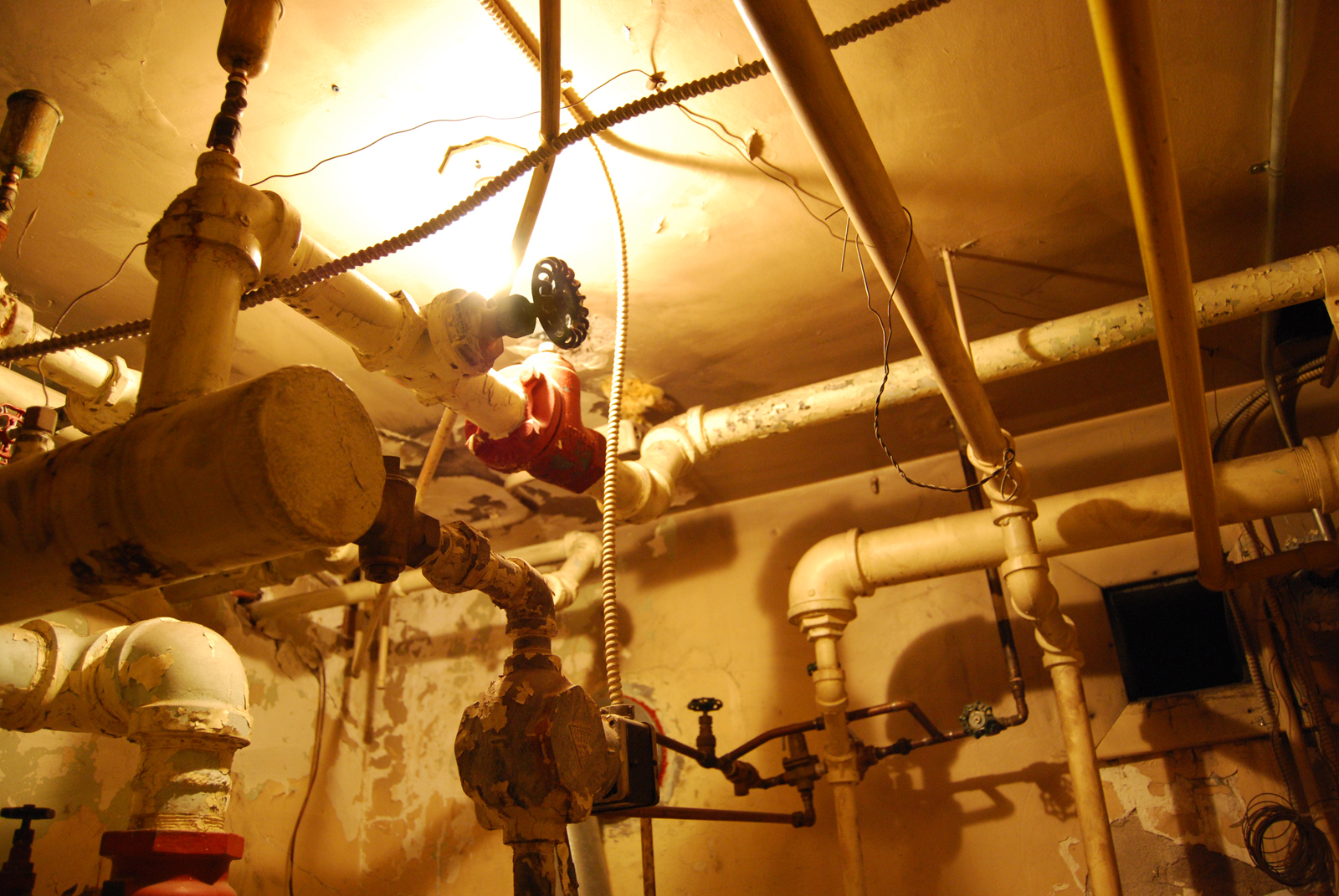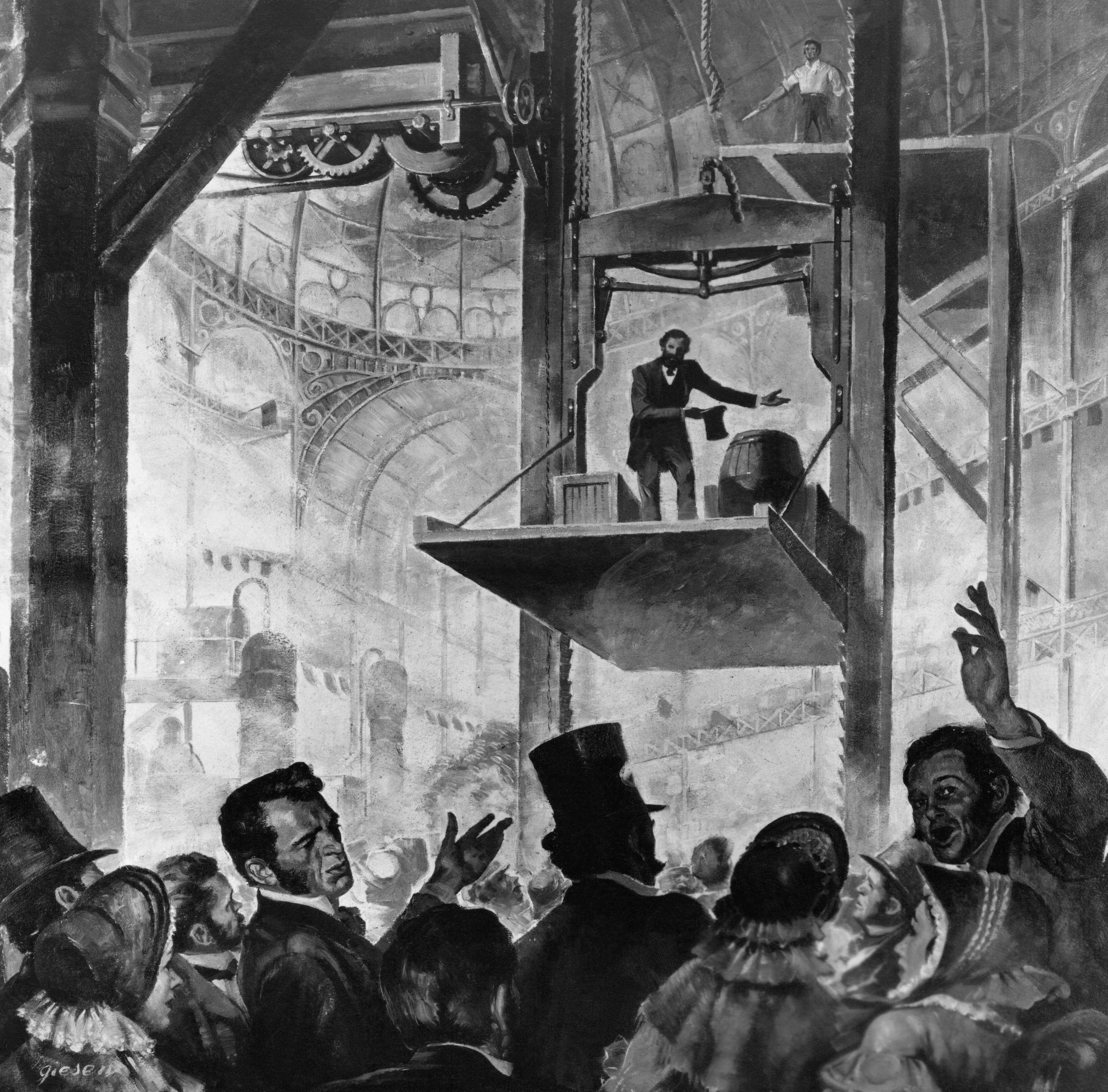|
Shearing Layers
Shearing layers is a concept coined by architect Frank Duffy, which was later elaborated by Stewart Brand in his book, '' How Buildings Learn: What Happens After They're Built'' (Brand, 1994), and refers to buildings as composed of several layers of change. The concept has been adopted by a number of technology vendors to also describe the different layers of systems within an organisation. Description The shearing layers concept views buildings as a set of components that evolve in different timescales; Frank Duffy summarized this view in his phrase: "Our basic argument is that there isn't any such thing as a building. A building properly conceived is several layers of longevity of built components" (quoted in (Brand, 1994)). The work of Duffy and DEGW identified four shearing layers (Duffy, 1992): * Shell – the traditional structure of the building that might last for 30–50 years. * Services – cabling, plumbing, aircon that needs replacing every 15 years. * Scenery – la ... [...More Info...] [...Related Items...] OR: [Wikipedia] [Google] [Baidu] |
Frank Duffy (architect)
Francis Cuthbert Duffy (born 3 September 1940) is a British architect, a founder of DEGW, the international architectural and design practice best known for office design and workplace strategy and, more recently for advanced thinking on the programming of educational and arts facilities. Duffy is particularly noted for his work on the future of the office and the flexible use of space. He was president of the RIBA from 1993 to 1995. He was appointed a Commander of the Order of the British Empire in the New Year Honours 1997. In 2004, he received the British Council of Offices (BCO) President's Award for Lifetime Achievement and in 2008 was named by ''Facilities Magazine'' as one of 25 Pioneers of Facilities Management in the UK. He is currently on the Board of Trustees of The Architecture Foundation. In the 1960s, Duffy was responsible for introducing '' Bürolandschaft ''( office landscaping) into the English-speaking world. His doctoral research at Princeton was focused o ... [...More Info...] [...Related Items...] OR: [Wikipedia] [Google] [Baidu] |
Stewart Brand
Stewart Brand (born December 14, 1938) is an American project developer and writer, best known as the co-founder and editor of the ''Whole Earth Catalog''. He has founded a number of organizations, including the WELL, the Global Business Network, and the Long Now Foundation. He is the author of several books, most recently '' Whole Earth Discipline: An Ecopragmatist Manifesto''. Life Brand was born in Rockford, Illinois, and attended Phillips Exeter Academy in New Hampshire. He studied biology at Stanford University under Paul R. Ehrlich, graduating in 1960. As a soldier in the U.S. Army, he was a parachutist and taught infantry skills; he later expressed the view that his experience in the military had fostered his competence in organizing. A civilian again in 1962, he studied design at San Francisco Art Institute, photography at San Francisco State College, and participated in a legitimate scientific study of then-legal LSD with Myron Stolaroff's International Foun ... [...More Info...] [...Related Items...] OR: [Wikipedia] [Google] [Baidu] |
What Happens After They're Built
What or WHAT may refer to: * What, an English interrogative word * "What?", one of the Five Ws used in journalism Film and television * ''What!'' (film), also known as ''The Whip and the Body'', a 1963 Italian film directed by Mario Bava * ''What?'' (film), a 1972 film directed by Roman Polanski * " What?!", a 2019 episode of the TV series ''Barry'' * "What", the name of the second baseman in Abbott and Costello's comedy routine " Who's on First?" * "What?", the catchphrase of professional wrestler Stone Cold Steve Austin Music * ''what.'', a comedy/music album by Bo Burnham, 2013 * What Records, a UK record label specializing in punk and indie music * What? Records, a US record label Songs * "What" (song), by Melinda Marx, 1965 * "What?" (Rob Zombie song), 2009 * "What?" (SB19 song), 2021 * "What?", by 666 from ''The Soft Boys'' * "What", by Bassnectar from ''Vava Voom'' * "What?", by Corrosion of Conformity from ''Eye for an Eye'' * "What?", by the Move from ''Looking ... [...More Info...] [...Related Items...] OR: [Wikipedia] [Google] [Baidu] |
Building Insulation
Building insulation is material used in a building (specifically the building envelope) to reduce the flow of thermal energy. While the majority of insulation in buildings is for thermal insulation, thermal purposes, the term also applies to acoustic insulation, Fireproofing, fire insulation, and Cushioning, impact insulation (e.g. for vibrations caused by industrial applications). Often an Building insulation materials, insulation material will be chosen for its ability to perform several of these functions at once. Since prehistoric times, humans have created thermal insulation with materials such as animal fur and plants. With the agricultural development, earth, stone, and cave shelters arose. In the 19th century, people started to produce insulated panels and other artificial materials. Now, insulation is divided into two main categories: bulk insulation and reflective insulation. Buildings typically use a combination. Insulation is an important economic and environmenta ... [...More Info...] [...Related Items...] OR: [Wikipedia] [Google] [Baidu] |
Plumbing
Plumbing is any system that conveys fluids for a wide range of applications. Plumbing uses piping, pipes, valves, piping and plumbing fitting, plumbing fixtures, Storage tank, tanks, and other apparatuses to convey fluids. HVAC, Heating and cooling (HVAC), Sewerage, waste removal, and Drinking water, potable water delivery are among the most common uses for plumbing, but it is not limited to these applications. The word derives from the Latin for lead, ''plumbum'', as the first effective pipes used in the Sanitation in ancient Rome, Roman era were lead pipes. In the developed world, plumbing infrastructure is critical to public health and sanitation. Boilermakers and pipefitters are not plumbers although they work with piping as part of their trade and their work can include some plumbing. History Plumbing originated during ancient civilizations, as they developed public baths and needed to provide drinking water, potable water and sewerage, wastewater removal for large ... [...More Info...] [...Related Items...] OR: [Wikipedia] [Google] [Baidu] |
Fire Sprinkler System
A fire sprinkler system is an active fire protection method, consisting of a water supply system providing adequate pressure and flowrate to a water distribution piping system, to which fire sprinklers are connected. Although initially used only in factories and large commercial buildings, systems for homes and small buildings are now available at a cost-effective price. Fire sprinkler systems are extensively used worldwide, with over 40 million sprinkler heads fitted each year. Fire sprinkler systems are generally designed as a life saving system, but are not necessarily designed to protect the building. Of buildings completely protected by fire sprinkler systems, if a fire did initiate, it was controlled by the fire sprinklers alone in 96% of these cases. History Leonardo da Vinci designed a sprinkler system in the 15th century. Leonardo automated his patron's kitchen with a super-oven and a system of conveyor belts. In a comedy of errors, everything went wrong during a ... [...More Info...] [...Related Items...] OR: [Wikipedia] [Google] [Baidu] |
HVAC
Heating, ventilation, and air conditioning (HVAC ) is the use of various technologies to control the temperature, humidity, and purity of the air in an enclosed space. Its goal is to provide thermal comfort and acceptable indoor air quality. HVAC system design is a subdiscipline of mechanical engineering, based on the principles of thermodynamics, fluid mechanics, and heat transfer. "Refrigeration" is sometimes added to the field's abbreviation as HVAC&R or HVACR, or "ventilation" is dropped, as in HACR (as in the designation of HACR-rated circuit breakers). HVAC is an important part of residential structures such as single family homes, apartment buildings, hotels, and senior living facilities; medium to large industrial and office buildings such as skyscrapers and hospitals; vehicles such as cars, trains, airplanes, ships and submarines; and in marine environments, where safe and healthy building conditions are regulated with respect to temperature and humidity, using fres ... [...More Info...] [...Related Items...] OR: [Wikipedia] [Google] [Baidu] |
Elevator
An elevator (American English) or lift (Commonwealth English) is a machine that vertically transports people or freight between levels. They are typically powered by electric motors that drive traction cables and counterweight systems such as a hoist, although some pump hydraulic fluid to raise a cylindrical piston like a jack. Elevators are used in agriculture and manufacturing to lift materials. There are various types, like chain and bucket elevators, grain augers, and hay elevators. Modern buildings often have elevators to ensure accessibility, especially where ramps aren't feasible. High-speed elevators are common in skyscrapers. Some elevators can even move horizontally. History Pre-industrial era The earliest known reference to an elevator is in the works of the Roman architect Vitruvius, who reported that Archimedes ( – ) built his first elevator probably in 236 BC. Sources from later periods mention elevators as cabs on a hemp rope, powered by people o ... [...More Info...] [...Related Items...] OR: [Wikipedia] [Google] [Baidu] |
Escalators
An escalator is a moving staircase which carries people between floors of a building or structure. It consists of a motor-driven chain of individually linked steps on a track which cycle on a pair of tracks which keep the step tread horizontal. Escalators are often used around the world in places where lifts would be impractical, or they can be used in conjunction with them. Principal areas of usage include department stores, shopping malls, airports, transit systems (railway/railroad stations), convention centers, hotels, arenas, stadiums and public buildings. Escalators have the capacity to move large numbers of people. They have no waiting interval (except during very heavy traffic). They can be used to guide people toward main exits or special exhibits and may be weatherproofed for outdoor use. A non-functional escalator can function as a normal staircase, whereas many other methods of transport become useless when they break down or lose power. History Inventors a ... [...More Info...] [...Related Items...] OR: [Wikipedia] [Google] [Baidu] |
Furniture
Furniture refers to objects intended to support various human activities such as seating (e.g., Stool (seat), stools, chairs, and sofas), eating (table (furniture), tables), storing items, working, and sleeping (e.g., beds and hammocks). Furniture is also used to hold objects at a convenient height for work (as horizontal surfaces above the ground, such as tables and desks), or to store things (e.g., cupboards, Shelf (storage), shelves, and drawers). Furniture can be a product of design and can be considered a form of decorative art. In addition to furniture's functional role, it can serve a symbolic or Religion, religious purpose. It can be made from a vast multitude of materials, including metal, plastic, and wood. Furniture can be made using a variety of woodworking joints which often reflects the local culture. People have been using natural objects, such as tree stumps, rocks and moss, as furniture since the beginning of human civilization and continues today in some househol ... [...More Info...] [...Related Items...] OR: [Wikipedia] [Google] [Baidu] |
Italian Language
Italian (, , or , ) is a Romance language of the Indo-European language family. It evolved from the colloquial Latin of the Roman Empire. Italian is the least divergent language from Latin, together with Sardinian language, Sardinian. It is spoken by about 68 million people, including 64 million native speakers as of 2024. Italian is an official language in Languages of Italy, Italy, Languages of San Marino, San Marino, Languages of Switzerland, Switzerland (Ticino and the Grisons), and Languages of Vatican City, Vatican City; it has official Minority language, minority status in Minority languages of Croatia, Croatia, Slovene Istria, Romania, Bosnia and Herzegovina, and the municipalities of Santa Teresa, Espírito Santo, Santa Tereza, Encantado, Rio Grande do Sul, Encantado, and Venda Nova do Imigrante in Languages of Brazil#Language co-officialization, Brazil. Italian is also spoken by large Italian diaspora, immigrant and expatriate communities in the Americas and Austral ... [...More Info...] [...Related Items...] OR: [Wikipedia] [Google] [Baidu] |
Gartner
Gartner, Inc. is an American research and advisory firm focusing on business and technology topics. Gartner provides its products and services through research reports, conferences, and consulting. Its clients include large corporations, government agencies, technology companies, and investment firms. Operations Gartner is a research and advisory firm with three business segments: research, conferences, and consulting. As of December 2024, Gartner has over 21,000 employees globally and operates in 90 countries and territories. It is headquartered in Stamford, Connecticut. Gene A. Hall is the chief executive officer. Gartner is a publicly traded company listed on the S&P 500. History 1980s Gideon Gartner and David Stein founded Gartner, Inc. in 1979 to provide IT industry research and analysis to businesses buying and selling computer hardware. Gideon Gartner had previously worked at IBM, and his new firm specialized in information about IBM and its products. Gartner's ... [...More Info...] [...Related Items...] OR: [Wikipedia] [Google] [Baidu] |









